I want to get some understanding about how exactly Automapper is working. I know the basic idea, before I just used so called ViewModels to send the information that the business needs extracted from one or more database tables. Now I'm working on a legacy project where Automapper is used and maybe it offers more than just that but for the given moment I want to undestand (be able) to map my Domain object(s) to my DTO object(s) or vice-versa, I'm not sure which one is the correct way to go since I'm not able to do it.
This is a simple example of a console project I've made to test some basic functionalities of Automapper:

Where the DTO_User.cs class is meant to be used to send a data to the front end. It looks like this:
public class DTO_User
{
public int ID { get; set; }
public string Name { get; set; }
}
And the User.cs is the class which represent the actual domain data :
public class User
{
public int ID { get; set; }
public string Name { get; set; }
public string PhoneNumber { get; set; }
}
So what I am trying to do. In my Program.cs I have a static method which creates some User obejcts:
public static List<Model.User> SeedUsers()
{
List<Model.User> users = new List<Model.User>()
{
new Model.User { ID = 1, Name = "Ivan", PhoneNumber = "1235436"},
new Model.User { ID = 2, Name = "Petkan", PhoneNumber = "00000000"},
new Model.User { ID = 3, Name = "Dragan", PhoneNumber = "11111111"},
new Model.User { ID = 4, Name = "Stoyan", PhoneNumber = "224545346"}
};
return users;
}
Then In my Main method I try to map this mocked data to my DTO List:
static void Main(string[] args)
{
Mapper.CreateMap<DTO.DTO_User, Model.User>();
//Mock user data as if it's taken from database
List<Model.User> users = new List<Model.User>();
users.AddRange(SeedUsers());//Simulate call to database
//Create List of DTO Users
List<DTO.DTO_User> dtoUsers = new List<DTO.DTO_User>();
//Now map the database users to our DTO Users
foreach (var user in users)
{
DTO.DTO_User u = Mapper.Map<Model.User, DTO.DTO_User>(user);
dtoUsers.Add(u);
}
}
I got the error inside the foreah loop here:
DTO.DTO_User u = Mapper.Map<Model.User, DTO.DTO_User>(user);
Saying that I have some invalid arguments. Obviously I don't really catch the idea how Automapper was meant to implement the actual mapping. The code above is what was looking most natural to me. I know that this is pretty basic so an actual solution won't be too challenging but I would really appreciate if someone explains to me where my logic cracks and what is the idea behind the working code.